Tea mountains: Mengsong & Nannuo
January, 3 2016
In the evening, after having spent the day in bed fighting against fever, I am finally able to get up and taste the tea of Mr. Feng. Unexpectedly, he begins steeping one of his best teas, a Sheng Pu from Laobanzhang made with Danzhu Gushu; in other words, a pu'er produced with the leaves of a single tree, several hundreds of years old. The leaves were personally collected one by one by Mr. Feng during the last spring in Laobanzhang.
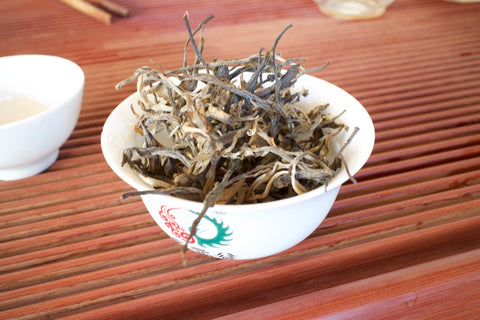
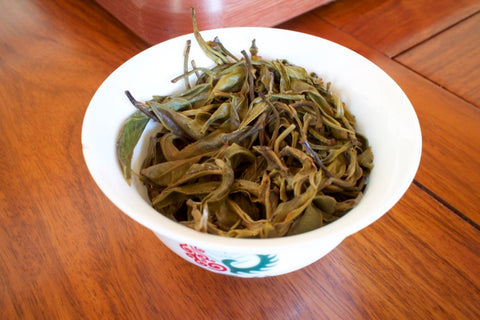

Leaves of a single ancient tree and Mr. Feng steeping them.
Mr. Feng makes tea with calm and meditative concentration. I watch him waiting impatiently for my cup. At the first sip sour notes wake up my taste buds, as to prepare them for the real soul of the tea, which is soon to be revealed. I am delighted in perceiving a similarity between this tea and the Gushu (tea from ancient trees) of Bulangshan that we have in our teashop in Berlin. Both have the same distinctive and satisfying flavor, sweet and savory at the same time. So characteristic that any further attempt to describe it would diminish its uniqueness. I wonder if the flavor is so unique due to the age of the trees or due to the terroir: Banzhan is located on the northwestern side of the Bulang mountain.
January, 4 2016
Finally the fever is over. I'm not yet in perfect shape, but healthy enough for a new adventure in the mountains. In the morning we go to Mengsong, a famous mountain with ancient trees. The road is steep and harsh. We have to stop several times to make sure that our off-road vehicle will be able to tackle the next section. It is a hot day and the sky is clear. Driving up the road, further mountains and valleys appear at the horizon.
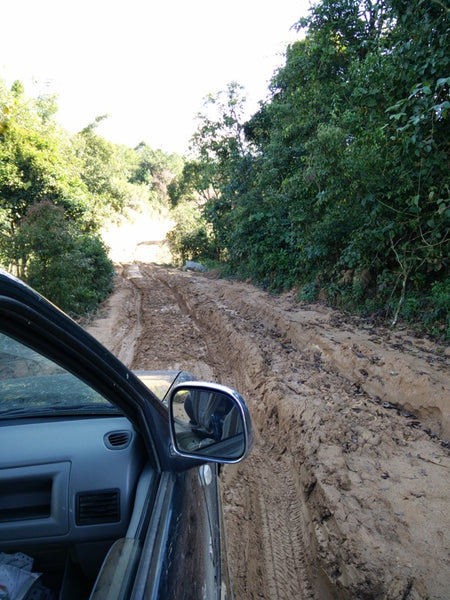
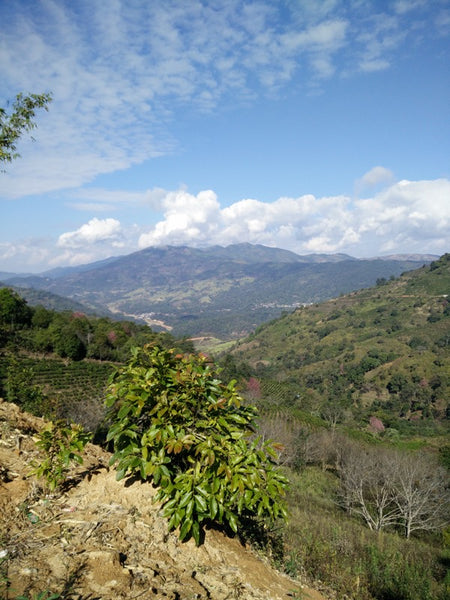
The muddy road on Mengsong mountain and the panorama
On the way we stop to visit a field of Zi Juan (Purple Beauty), a tea plant developed in Yunnan in the eighties and characterized by purple leaves. The Pu'er made with Zi Juan leaves are not very bitter and quite delicate, even though in my opinion a bit too bland.
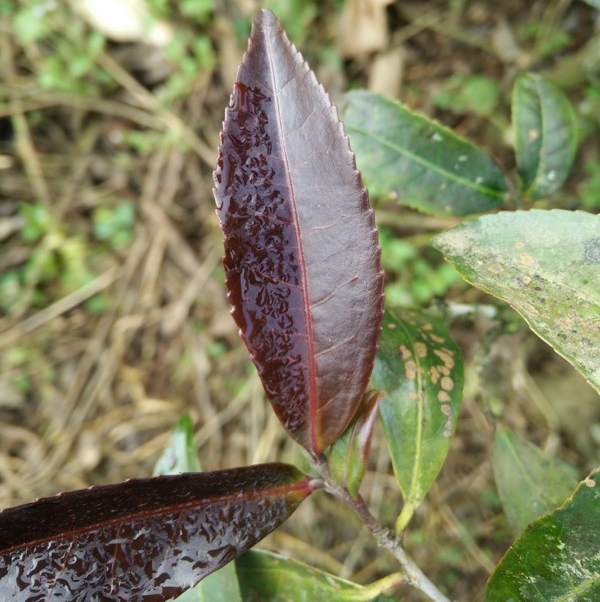
Leaves of Zi Juan, a purple-leaf tea plant
At the end of the road we park the car and continue on foot along a path beside a tea tree field. Mr. Feng explains that these trees were planted over three hundred years ago!
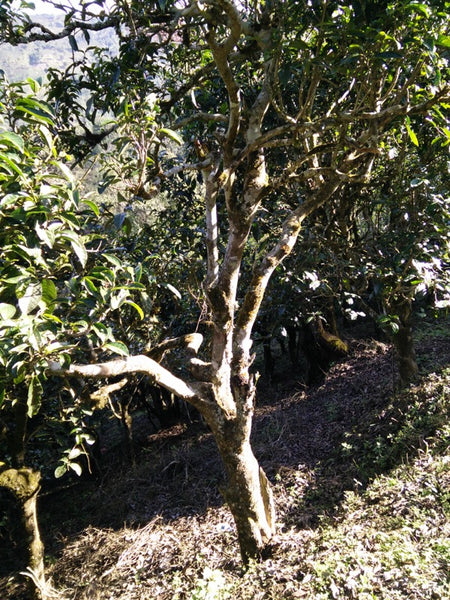
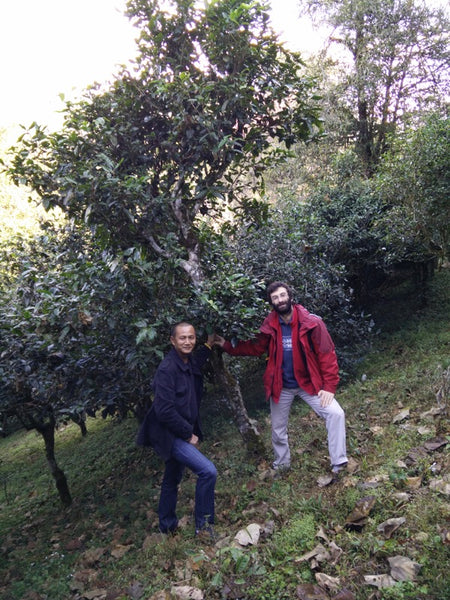
Gushu "ancient tea trees" on Mengsong mountain
Before going back down the mountain we stop for lunch at a farm. The house is currently inhabited by three farmers, who work for Mr. Feng. In this stable, during the harvest season, the fresh leaves are heated in wok and dried under the sun. The dried leaves are then compressed into cakes (bing cha) in the factory located down in the valley.
The woks are in a large room, along the wall. On the outer side the wall has recesses to host the fire used to heat up the woks. Keeping the fire outside prevent the smoke from getting in contact with the leaves; so the tea flavor remains pure. In other farms I have seen the fire indoor, right behind the wok.
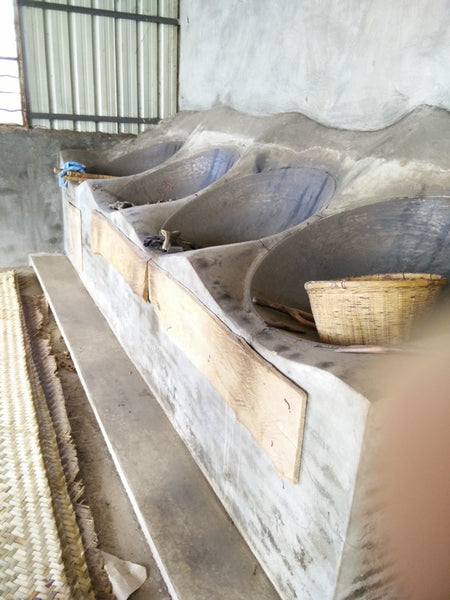

Wok for Sha Qing "kill the green" of fresh pu'er leaves, one of the first step in pu'er production
We drink a last tea before driving back. Next to us an old man weaves strips of bamboo to form mats on which in spring the leaves will be laid for drying under the sun.
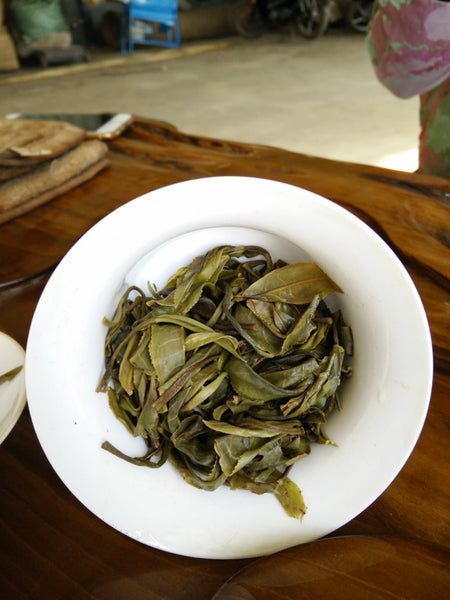

Infused leaves of gushu (pu'er from ancient tea trees) and a man weaving a bamboo mat.
In the afternoon we drive to nannuoshan, the mountain that inspired the name of our tea shop in Berlin.
It was here that six years ago I came for the first time in direct contact with the cultivation of tea.
After arriving in Yunnan by boat on the Mekong River from Thailand, I ventured on the slopes of Nannuoshan where a farmer and his family hosted me for some days. They did not speak English and the only thing I have left of that trip are a few photos of their home.
After many attempts and when I was about to lose all hope we meet a man who seems to recognize the photograph. He tells us that the house on the picture has been demolished. The owners got rich selling Pu'er and are now building a house made of concrete in place of the old wooden hut. He accompanies us to the house.
I barely recognize the road. Everything is so different! The brick columns at the entrance of the house, however, are still in my memory. We are definitely in the right place. We cross the unfinished house and we climb the stairs of a temporary hut built on the back of it; and there he is! I recognize the farmer's son who had hosted me! But he recognizes me only after I showed him the pictures of that first trip. At that time I was clean-shaven and with shorter hair ☺
Few minutes later the father enter the room; a small and smiling man. The youngest daughter, who six years ago had spent the days with me, got married a year ago and now lives in Guangdong, a province in southeastern China. I recognize her in a photo portrait on the wall.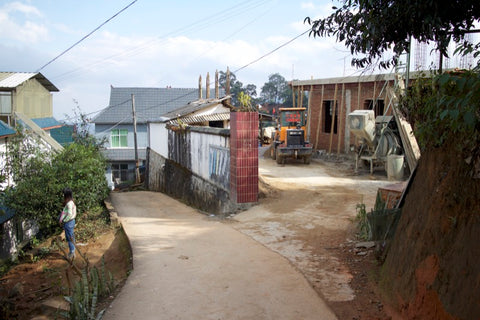


The entrance of the farmer's house now (top-left) and six years ago (top-right).
Gabriele and the farmer (down-left). His daughter in portrait (down-right).
Written by Gabriele


